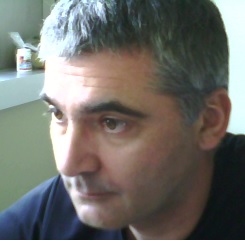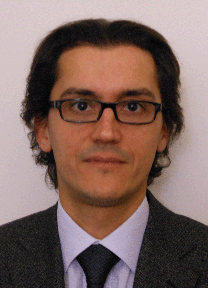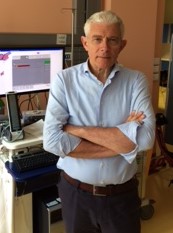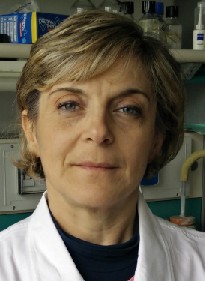Studiare
In questa sezione è possibile reperire le informazioni riguardanti l'organizzazione pratica del corso, lo svolgimento delle attività didattiche, le opportunità formative e i contatti utili durante tutto il percorso di studi, fino al conseguimento del titolo finale.
Calendario accademico
Il calendario accademico riporta le scadenze, gli adempimenti e i periodi rilevanti per la componente studentesca, personale docente e personale dell'Università. Sono inoltre indicate le festività e le chiusure ufficiali dell'Ateneo.
L’anno accademico inizia il 1° ottobre e termina il 30 settembre dell'anno successivo.
Calendario didattico
Il calendario didattico indica i periodi di svolgimento delle attività formative, di sessioni d'esami, di laurea e di chiusura per le festività.
| Periodo | Dal | Al |
|---|---|---|
| INF TN - 2° anno 1° sem | 2-ott-2017 | 12-dic-2017 |
| INF TN - 1° anno 1° sem | 9-ott-2017 | 19-dic-2017 |
| INF TN - 3° anno 1° sem | 16-ott-2017 | 19-dic-2017 |
| INF TN - 1° anno 2° sem | 1-feb-2018 | 11-apr-2018 |
| INF TN - 3° anno 2° sem | 1-feb-2018 | 27-mar-2018 |
| INF TN - 2° anno 2° sem | 2-mag-2018 | 22-giu-2018 |
| Sessione | Dal | Al |
|---|---|---|
| INF TN- sessione invernale 2 anno (1 parte) | 18-dic-2017 | 21-dic-2017 |
| INF TN- sessione invernale 3 anno | 8-gen-2018 | 31-gen-2018 |
| INF TN- sessione invernale 1 anno | 8-gen-2018 | 31-gen-2018 |
| INF TN- sessione invernale 2 anno (2 parte | 8-gen-2018 | 24-gen-2018 |
| INF TN- sessione estiva 3 anno (1 parte) | 11-apr-2018 | 24-apr-2018 |
| INF TN- sessione estiva 1 anno (1 parte) | 16-apr-2018 | 27-apr-2018 |
| INF TN- sessione estiva 2 anno | 4-lug-2018 | 31-lug-2018 |
| INF TN- sessione estiva 1 anno (2 parte) | 16-lug-2018 | 31-lug-2018 |
| INF TN- sessione estiva 3 anno (2 parte) | 18-lug-2018 | 31-lug-2018 |
| INF TN- sessione autunnale 2 anno | 6-set-2018 | 27-set-2018 |
| INF TN- sessione autunnale 3 anno | 6-set-2018 | 27-set-2018 |
| INF TN- sessione autunnale 1 anno | 10-set-2018 | 28-set-2018 |
| Sessione | Dal | Al |
|---|---|---|
| 1^ SESSIONE | 1-ott-2018 | 30-nov-2018 |
| 2^ SESSIONE | 1-mar-2019 | 30-apr-2019 |
| Periodo | Dal | Al |
|---|---|---|
| Festa di Ognissanti | 1-nov-2017 | 1-nov-2017 |
| Festa Immacolata Concezione | 8-dic-2017 | 8-dic-2017 |
| Vacanze natalizie | 22-dic-2017 | 7-gen-2018 |
| Vacanze di Pasqua | 30-mar-2018 | 3-apr-2018 |
| Festa della liberazione | 25-apr-2018 | 25-apr-2018 |
| Festa della Repubblica | 2-giu-2018 | 2-giu-2018 |
| Descrizione | Periodo | Dal | Al |
|---|---|---|---|
| INF TN 2° anno 1^ esp | INF TN 2° anno 1^ esp | 25-gen-2018 | 6-mar-2018 |
| INF TN 2° anno 2^ esp | INF TN 2° anno 2^ esp | 12-mar-2018 | 20-apr-2018 |
| INF TN 3° anno 1^ esp | INF TN 3° anno 1^ esp | 26-apr-2018 | 5-giu-2018 |
| INF TN 1° anno 1^ esp | INF TN 1° anno 1^ esp | 2-mag-2018 | 5-giu-2018 |
| INF TN 3° anno 2^ esp | INF TN 3° anno 2^ esp | 11-giu-2018 | 17-lug-2018 |
| INF TN 1° anno 2^ esp | INF TN 1° anno 2^ esp | 11-giu-2018 | 13-lug-2018 |
| INF TN 3° anno 3^ esp | INF TN 3° anno 3^ esp | 3-set-2018 | 18-ott-2018 |
| INF TN 2° anno 3^ esp | INF TN 2° anno 3^ esp | 3-set-2018 | 12-ott-2018 |
Calendario esami
Gli appelli d'esame sono gestiti dalla Unità Operativa Segreteria Corsi di Studio Medicina.
Per consultazione e iscrizione agli appelli d'esame visita il sistema ESSE3.
Per problemi inerenti allo smarrimento della password di accesso ai servizi on-line si prega di rivolgersi al supporto informatico della Scuola o al servizio recupero credenziali
Per dubbi o domande leggi le risposte alle domande più frequenti F.A.Q. Iscrizione Esami
Docenti
 anita.bevilacqua@apss.tn.it
anita.bevilacqua@apss.tn.it
 borghesi.a@mail.apss.tn.it
borghesi.a@mail.apss.tn.it
 elena.bravi@apss.tn.it
elena.bravi@apss.tn.it
 cembrani@apss.tn.it
cembrani@apss.tn.it
 dellai@tn.apss.tn.it
dellai@tn.apss.tn.it
 tullio.ferrari@univr.it
tullio.ferrari@univr.it
 franco.fraccaroli@unitn.it
franco.fraccaroli@unitn.it
 alessandra.magotti@tin.it
alessandra.magotti@tin.it
 loredana.pancheri@univr.it
loredana.pancheri@univr.it
Zadra Tania
Piano Didattico
Il piano didattico è l'elenco degli insegnamenti e delle altre attività formative che devono essere sostenute nel corso della propria carriera universitaria.
Selezionare il piano didattico in base all'anno accademico di iscrizione.
1° Anno
| Insegnamenti | Crediti | TAF | SSD |
|---|
Laboratori professionali (primo anno)
2° Anno Attivato nell'A.A. 2018/2019
| Insegnamenti | Crediti | TAF | SSD |
|---|
Laboratori professionali (secondo anno)
3° Anno Attivato nell'A.A. 2019/2020
| Insegnamenti | Crediti | TAF | SSD |
|---|
Laboratori professionali (terzo anno)
| Insegnamenti | Crediti | TAF | SSD |
|---|
Laboratori professionali (primo anno)
| Insegnamenti | Crediti | TAF | SSD |
|---|
Laboratori professionali (secondo anno)
| Insegnamenti | Crediti | TAF | SSD |
|---|
Laboratori professionali (terzo anno)
Legenda | Tipo Attività Formativa (TAF)
TAF (Tipologia Attività Formativa) Tutti gli insegnamenti e le attività sono classificate in diversi tipi di attività formativa, indicati da una lettera.
Prospettive
Avvisi degli insegnamenti e del corso di studio
Per la comunità studentesca
Se sei già iscritta/o a un corso di studio, puoi consultare tutti gli avvisi relativi al tuo corso di studi nella tua area riservata MyUnivr.
In questo portale potrai visualizzare informazioni, risorse e servizi utili che riguardano la tua carriera universitaria (libretto online, gestione della carriera Esse3, corsi e-learning, email istituzionale, modulistica di segreteria, procedure amministrative, ecc.).
Entra in MyUnivr con le tue credenziali GIA: solo così potrai ricevere notifica di tutti gli avvisi dei tuoi docenti e della tua segreteria via mail e a breve anche tramite l'app Univr.
Gestione carriere
Orario lezioni
Documenti
| Titolo | Info File |
|---|---|
|
|
pdf, it, 437 KB, 07/03/24 |
|
|
pdf, it, 457 KB, 16/04/24 |
|
|
pdf, it, 450 KB, 05/04/24 |
|
|
pdf, it, 628 KB, 08/01/24 |
|
|
pdf, it, 1453 KB, 07/02/24 |
Guida ai programmi degli insegnamenti
Guida ai programmi degli insegnamenti
Documenti
| Titolo | Info File |
|---|---|
|
|
pdf, it, 1594 KB, 12/12/22 |
|
|
pdf, it, 1310 KB, 02/09/21 |
Prova Finale
Per essere ammessi alla prova finale occorre avere conseguito tutti i crediti nelle attività formative previste dal piano degli studi, compresi quelli relativi all’attività di tirocinio. Alla preparazione della tesi sono assegnati 7 CFU.
La prova è organizzata, con decreto del Ministro dell'Istruzione, dell'Università e della Ricerca di concerto con il Ministro del Lavoro, della Salute e delle Politiche Sociali, in due sessioni definite a livello nazionale.
La prova finale, con valore di esame di Stato abilitante, si compone di:
- una prova pratica che consiste in un elaborato scritto strutturato, semi-strutturata o con domande aperte su casi/situazioni esemplificative della pratica professionale. La prova deve comprendere una selezione di quesiti di problem solving e di quesiti sulla presa di decisione nelle aree di competenza infermieristica.
- La redazione di un elaborato di tesi e sua dissertazione.
Le due diverse componenti della prova finale devono concorrere in egual misura alla determinazione del voto finale. In caso di valutazione insufficiente della prova pratica l’esame si interrompe e si ritiene non superato. La prova finale viene sospesa e va ripetuta interamente in una seduta successiva.
Il punteggio finale di Laurea è espresso in centodecimi con eventuale lode. Esso viene formato sommando la media ponderata dei voti conseguiti negli esami di profitto, rapportata a 110, con il punteggio ottenuto nella prova pratica (6 punti) e nella discussione della Tesi (parimenti fino ad un massimo di 6 punti)
La Commissione di Laurea potrà attribuire ulteriori punti anche in base a: presenza di eventuali lodi ottenute negli esami sostenuti; partecipazione progetto Erasmus 2 punti aggiuntivi; laurea entro i termini della durata normale del corso 1 punto
Lo studente avrà la supervisione di un docente del Corso di Laurea, detto Relatore, ed eventuali correlatori anche esterni al Corso di Laurea.
Scopo della tesi è quello di impegnare lo studente in un lavoro di formalizzazione, progettazione e di ricerca, che contribuisca sostanzialmente al completamento della sua formazione professionale e scientifica. Il contenuto della tesi deve essere inerente a tematiche o discipline strettamente correlate al profilo professionale.
La valutazione della tesi sarà basata sui seguenti criteri: livello di approfondimento del lavoro svolto, contributo critico del laureando, accuratezza della metodologia adottata per lo sviluppo della tematica.
È prevista la possibilità per lo studente di redigere l'elaborato in lingua inglese.
La scadenza per la presentazione della domanda di laurea e relativa documentazione, verrà indicata negli avvisi dello specifico Corso di Laurea
Documenti
| Titolo | Info File |
|---|---|
|
|
pdf, it, 242 KB, 19/01/24 |
|
|
pdf, it, 80 KB, 06/04/24 |
|
|
pdf, it, 43 KB, 06/04/24 |
|
|
pdf, it, 44 KB, 09/04/24 |
|
|
pdf, it, 148 KB, 06/04/24 |
|
|
pdf, it, 108 KB, 06/04/24 |
|
|
pdf, it, 115 KB, 06/04/24 |
|
|
pdf, it, 1487 KB, 18/02/22 |
|
|
pdf, it, 437 KB, 22/03/24 |
|
|
pdf, it, 957 KB, 22/03/24 |
|
|
pdf, it, 424 KB, 19/01/24 |
Linee guida per riconoscimento cfu
Lo studente che intende chiedere il riconoscimento di moduli o insegnamenti pregressi dovrà presentare domanda, entro il 30 novembre dell’anno accademico in corso, seguendo le indicazioni indicate al link seguente: https://www.univr.it/it/i-nostri-servizi/segreterie-studenti/gestione-carriere-studenti-medicina-e-chirurgia/riconoscimento-crediti-acquisiti-da-una-carriera-pregressa-medicina
Documenti
| Titolo | Info File |
|---|---|
|
|
pdf, it, 295 KB, 09/11/21 |
Area riservata studenti
Attività didattiche regime part-time
Modalità di richiesta
La domanda di iscrizione part-time può essere presentata all'inizio di ogni anno accademico e comunque entro il 30 novembre di ogni anno. Entro lo stesso termine, se necessario, lo studente potrà richiedere di tornare al regime full-time. Al link seguente la pagina del servizio https://www.univr.it/it/i-nostri-servizi/segreterie-studenti/flessibilita-nella-frequenza-dei-corsi/possibilita-di-iscrizione-part-time-e-ripristino-full-time
Una volta inviata la domanda, lo studente concorda in via preventiva con il Coordinatore della didattica professionale (CDP), il piano di studi che intende perseguire nel periodo di part-time compilando il modulo in allegato
Documenti
| Titolo | Info File |
|---|---|
|
|
octet-stream, it, 1309 KB, 21/10/22 |
Appelli d'esame
Appelli d'esame
Documenti
| Titolo | Info File |
|---|---|
|
|
pdf, it, 429 KB, 17/04/24 |
|
|
pdf, it, 2762 KB, 15/12/22 |
Tirocinio Professionalizzante
Tirocinio Professionalizzante
Attività Seminariali e a scelta dello studente
Attività Seminariali e a scelta dello studente

 +39 0458126418
+39 0458126418
















